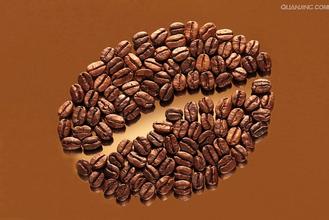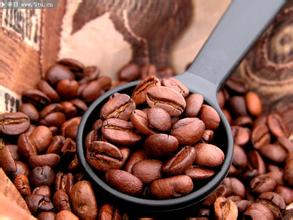Introduction of boutique coffee beans in coffee flavor and taste areas of Chateau Saint Roman, Costa Rica
1502 C. Columbus discovered the Costa Rican coast on his fourth voyage. Since then, Spanish settlers have invaded many times.
Cartago City was built in 1563, Costa Rica became a Spanish colony and was placed under the jurisdiction of the Governor General of Guatemala. During colonial rule, under the cruel slavery and oppression of Spanish colonists, the Indians were almost wiped out, and there was very little labor available for slavery. The Spanish had to cultivate their own small plots of land and produce their own agricultural products. Costa Rica has suffered from chronic poverty, ignorance and isolation. [2]
In the 1820s, the Latin American independence movement flourished, and Costa Rica declared independence in 1821.
In 1822 it was incorporated into the Mexican Empire of Iturvid.
Joined the Central American Federation in 1823.
The Republic of Costa Rica was founded in 1848.
From 1821 to 1870, Costa Rica's government was mainly controlled by two families, J. R. Moras and J. M. Montealegre. The economy developed greatly, and coffee grew especially rapidly and became the main export product.
From 1855 to 1857, President Mora Bolas commanded Costa Rican troops to join forces with other Central American countries to crush the invasion of American adventurer W. Volcker and defend Central American independence.
From 1870 to 1882, T. Guardia Gutierrez imposed a dictatorship that weakened both families. Since the 1970s, British and American capital has infiltrated. American entrepreneur M. C. Keith signed a contract with the Costa Rican government to build a railway from Port Limon on the east coast to San Jose, and obtained a 99-year lease to occupy a large area of land for banana plantations.
In 1899, the United States took over Keith's industry and controlled the railway and banana production and export. In 1913, banana exports ranked first in the world.
In 1917 F. Tinoco Granados staged a coup d'état and established a military dictatorship. After Tinoco Granados stepped down, all previous rulers were controlled by American monopoly capital. The 1930s saw the rise of the workers 'movement.
The Communist Party of Costa Rica was founded in 1931 (renamed the People's Vanguard Party in 1943). The party led the banana plantation workers 'strike in 1934.
From 1940 to 1948, the governments of R. A. Calderón Guardia and T. Picardo were intimidated by the People's Democratic Movement and adopted some democratic reform measures under the impetus of the People's Pioneer Party.
In the 1948 general election, the Social Democratic leader J. M. H. Figueres Ferrer waged a civil war, seized power, established a governing council (see Costa Rican Civil War), and the People's Vanguard Party was declared illegal.
In 1949 Figueres Ferrer handed over power to the elected leader of the National League, O. Urat Blanco.
October 1951 Figueres Ferrer founded the National Liberation Party
Coffee beans related industries, Costa Ricans say, coffee has changed the country, can enjoy a rich environment, coffee indeed outstanding contribution; although Costa Rica's land area is the third lowest in Central America, but the economic environment is better than half of the countries, but also because of the rich people, social stability, but also spare energy to care about environmental issues, Costa Rica has more than 30 national parks.
Coffee was introduced to Costa Rica from Cuba in 1729, and today its coffee industry is one of the most well-organized in the world, producing up to 1700 kilograms per hectare. Costa Rica has a population of 3.5 million, but coffee trees number 400 million, and coffee exports account for 25% of the country's total exports. Costa Rica's volcanic soils are fertile and well drained, especially in the Central Plateau, where the soil consists of successive layers of ash and dust. Costa Rica was thus the first country in Central America to grow coffee and bananas for commercial value. Coffee and bananas are the country's main exports.
Located about 30 kilometers northeast of San Jose, Costa Rica's capital, the research center is part of the Costa Rican Coffee Association, Costa Rica's national coffee breed.
The newly developed villa sarchi is a research institute for planting, breeding and quality inspection. In addition, it has 10 hectares of experimental fields planted with several excellent varieties. Coffee is Costa Rica's main agricultural product, with an annual output of more than 2 million bags (60 kg) and an export earnings of 250 million US dollars, second only to pineapples and bananas.
In Costa Rica, Arabica coffee trees are grown, improved, the quality of coffee beans is better and more stable; in order to facilitate picking, coffee trees are continuously pruned to maintain a height of about 2 meters; people eat coffee is the fruit of the seeds released by water brewing flavor. After picking the green coffee beans, the seeds (i.e. coffee beans) can only be roasted after removing the peel, pulp, seed membrane and sunlight exposure. Now some processes can be replaced by machines, which increases the speed of coffee production. However, there is no machine for picking coffee beans, so manual work must be used.

Important Notice :
前街咖啡 FrontStreet Coffee has moved to new addredd:
FrontStreet Coffee Address: 315,Donghua East Road,GuangZhou
Tel:020 38364473
- Prev

Introduction to the characteristics of coffee flavor and taste varieties in Santa Rita Manor, Colombia.
After the news of Napoleon I's invasion of Spain in 1808 spread to Colombia, the people of that place immediately launched an independence movement. On July 20, 1810, a large-scale uprising against Spanish colonial rule broke out in Bogota and the Governor of New Granada was arrested. In November 1811, representatives from all over the world organized Congress in Bogota and established the New Granada Joint Provincial Government, which was announced on November 11.
- Next

Introduction to the coffee flavor and taste characteristics of Esmeralda Manor in Panama
Panama is located in the isthmus of Panama in Central America, bordered by Colombia to the east, the Pacific Ocean to the south, the map of Panama to Costa Rica to the west and the Caribbean Sea to the north. The territory is S-shaped to connect North and South America, and the Panama Canal connects the Atlantic and Pacific oceans from north to south. It is known as the bridge of the world. [5] Panama has a land area of 75517 square kilometers.
Related
- Does Rose Summer choose Blue, Green or Red? Detailed explanation of Rose Summer Coffee plots and Classification in Panamanian Jade Manor
- What is the difference between the origin, producing area, processing plant, cooperative and manor of coffee beans?
- How fine does the espresso powder fit? how to grind the espresso?
- Sca coffee roasting degree color card coffee roasting degree 8 roasting color values what do you mean?
- The practice of lattes: how to make lattes at home
- Introduction to Indonesian Fine Coffee beans-- Java Coffee producing area of Indonesian Arabica Coffee
- How much will the flavor of light and medium roasted rose summer be expressed? What baking level is rose summer suitable for?
- Introduction to the characteristics of washing, sun-drying or wet-planing coffee commonly used in Mantenin, Indonesia
- Price characteristics of Arabica Coffee Bean Starbucks introduction to Manning Coffee Bean Taste producing area Variety Manor
- What is the authentic Yega flavor? What are the flavor characteristics of the really excellent Yejasuffi coffee beans?

